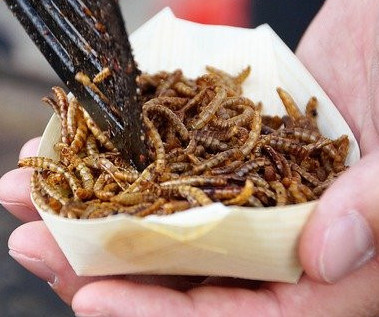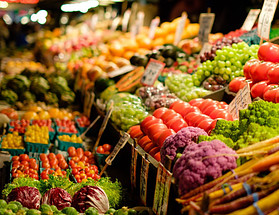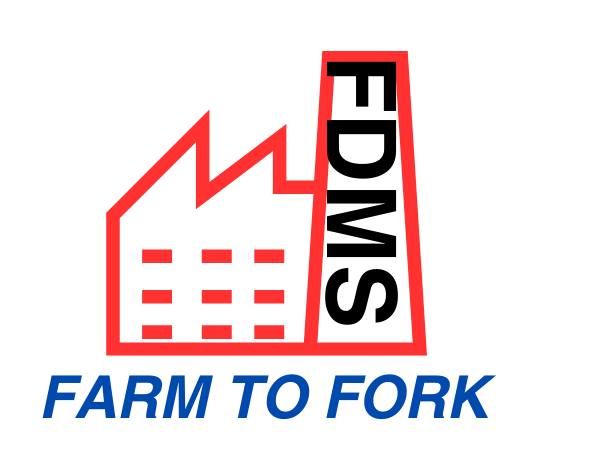Are you eating for the environment or health?
Introduction
All the living organisms depends on each other to survive. Food is the source of energy and nutrients for boths plants and animals. There is competition of nutrients at every levely hence food security is for every living animal. In the process of acquisition of energy and nutrients by plants (primary producers), there are challenges faced by the plants such as bioaccumulation, bioconcentration by aquatic food chains (toxins accumulate in the organisms), and biomagnification such as persistent organic pollutants. These challenges increase food insecurity for living organism as it will no longer be safe.

The global population is projected to reach 9Bn by 2050 and the land will not be big enough to supply enough food for the growing population. There is need for the different stakeholder to look at sustainable ways of producing food whilst conserving the land, water, ozone layer and managing waste. United Nations has published sustainable development goals to help the stakeholders to drive the conservation strategies forward.
Food Trends
Most people are leaning towards alternative proteins (plant based foods and entomophargy). Eating better is the new food preference driving consumers to be either flexitarians or vegetarians or follow diets with no or less meat. This is better for health, environment, animale walfare, more food for feeding the world fairly, sustainable livelihoods and business oppoturnities. A sustainable diet according to Food and Agriculture should encompase the dimensions of affordability, environmental impact, nutritional adequency, cultural acceptance and economic development.

Environmental Impact Indicators
Green house gas emissions – production of carbon dioxide, methane, nitrous oxide, and sulphur dioxide. The air acidification (emissions in the atmosphere responsible for acid rains) in grams sulphur dioxide equivalent units. The freshwater eutrophication that is the accumulation of ions in water can result in un-wanted algae development, bioaccumulation or biomagnification in both plants and aquatic animals. Environmental impact of any food product is assessed by life cycle analysis (compilation and evaluation of the inputs, outputs and the potential environmental impacts of a product system throughout its life cycle.
Life Cycle Analysis (LCA)
LCA is an sssessment of environmental impact of a food product and is usually divided into six lifecycle stages such as agriculture/ breeding, industrial processing, logistics, packaging, use, and end of life.

It is an environmental management tool which is applies a system – wide examination, uses a multi-media approach (air, water, solid waste), identifies trade – offs among the alternatives, identifies opportunities to improve systems, support environmental decision making and ultimately achieves a sustainable development. For further information on LCA check the ISO 14040, Life Assessment – Principles and Framework 1997 and ISO 14040 Life Cycle Assessment -Requirements and Guidelines 2006.
Nutritional Quality of Foods
To assess the nutritional quality of each food, the score for the nutritional adequacy of individual foods (SAIN) and score fof nutrients to be limite (LIM) scores are used. Both scores are calculated as average (nutrient content/recommendation) ratios, with the SAIN per 100 kcal and the LIM per 100 g. The SAIN uses five basic nutrients (ie, protein, fibre, calcium, vitamin C, and iron), and the LIM includes three nutrients (ie, saturated fatty acids, added sugars, and sodium). The median SAIN:LIM ratio of the foods increases with the increasing nutritional quality of the diets. There should be a balance in optimal nutrition with sustainability as a nutritious diet does not guarantee low environmental impact and on the other hand a sustainable diet is not necessarily healthy. Most low-GHG-emission foods have higher nutritional quality and a lower price per kilogram making them suitable to be included in sustainable diets.
Waste reduction
Globally, a third of food produced is wasted. This is attributed to factors such as poor harvesting techniques and post – harvest management, inadequate cooling facilities in the supply chain, lack of trained personnel, and access to modern technology such as modified atmospheric packaging, ethylene scavanging patches for fresh produce, and temperature and humidity sensors. Strategies such as recycleable packaging, edible packaging, plant – based packaging are among the different methods used to reduce single use plastics. Fruits and vegetables have the lowest green house emissions, good nutrient density, reasonable cost but the biggest pollutors due their short shelf life.
Different technologies have been used to reduce damage during harvesting and post harvest management, extend shelf life such as drying and freezing as well as other technologies such as the hurdle technology.

There are strategies to reduce food waste from manufacturing through recycling of fruits and vegetables trimmings, peels amd semi – finished products or left over products. Minimally processed fruits and vegetables and valorisations have been used extensively to reduce food waste.
Conversation of land and water
New technologies have been developed to conserve land and water during farming such as aquaponics, hydroponics and aeroponics. These technologies are commonly applied to vertical farms. Foods produced using these technologies are usually not labelled, and there are concerns on transparency and consumer access to information especially for those who follow particular diets.

Although there is no evidence of allegern contamination of foods grown in aquaponics, some customers are sceptic of some fruits of vegetables having the smell of fish.
Are you eating for the environment or health?
Regardless of the different strategies to produce sustainable foods, we still need to ask ourselves are we eating for environment or health. If we are eating for the environment we will eventually achieve good health. Some things to consider when planning daily meals could be packaging, plant based or insects as opposed to animal based foods, preservation methods at home to reduce food waste, shopping wisely considering shelf life and expiration dates and deals do not buy what you do not need, plan meals with ingredients which can be used in more than one dish, understanding how to recycle left over foods, be wise with portion sizes and finally know what your family members likes eating and try to cater for most of the family members as opposed to forced or imposed diets – the food will just end up in the waste pile.
If you have any questions please email admin@foodanddrinkmanufacturing.com or use the contact us page to send us your question(s).

